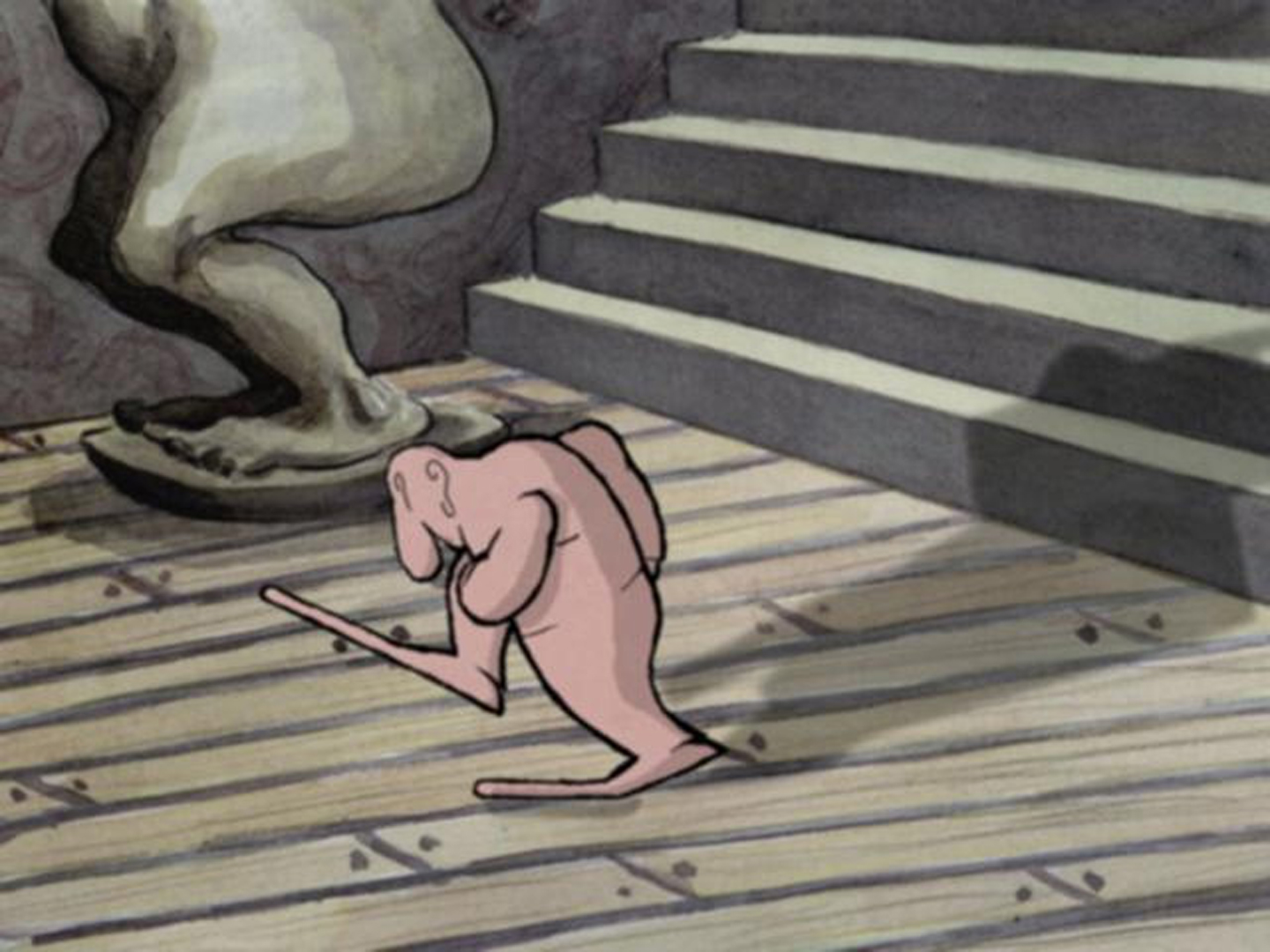“Shadows for cel animation” by Petrović, Fujito, Williams and Finkelstein
Conference:
Type(s):
Title:
- Shadows for cel animation
Presenter(s)/Author(s):
Abstract:
We present a semi-automatic method for creating shadow mattes in cel animation. In conventional cel animation, shadows are drawn by hand, in order to provide visual cues about the spatial relationships and forms of characters in the scene. Our system creates shadow mattes based on hand-drawn characters, given high-level guidance from the user about depths of various objects. The method employs a scheme for “inflating” a 3D figure based on hand-drawn art. It provides simple tools for adjusting object depths, coupled with an intuitive interface by which the user specifies object shapes and relative positions in a scene. Our system obviates the tedium of drawing shadow mattes by hand, and provides control over complex shadows falling over interesting shapes.
References:
1. CORRI~A, W. T., JENSEN, R. J., THAYER, C. E., AND FINKELSTEIN, A. Texture mapping for cel animation. Computer Graphics (Proceedings of SIGGRAPH 98), 435-446.
2. FEKETE, J., BIZOUARN, E., COURNARIE, E., GALAS, T., AND TAILLEFER, F. TicTacToon: A paperless system for professional 2-D animation. Computer Graphics (Proceedings of SIGGRAPH 95), 79-90.
3. GORNOWlCZ, G., AND WILLIAMS, L. Snap to it! Automatic 3D object and silhouette registration. Sketches and Applications, SIGGRAPH 2000.
4. IGARASHI, T., MATSUOKA, S., AND TANAKA, H. Teddy: A sketching interface for 3D freeform design. Computer Graphics (Proceedings of SIGGRAPH 99), 409-4 16.
5. KERSTEN, D., MAMASSIAN, P., AND KNILL, D. C. Moving cast shadows induce apparent motion in depth. Perception 26, 2 (1997), 171-192. Also see: http://vision.psych.umn.edu/www/kersten-lab/demos/shadows.html.
6. RADEMACHER, P. View-dependent geometry. Computer Graphics (Proceedings of SIGGRAPH 99), 439-446.
7. ROBERTSON, B. Disney lets CAPS out of the bag. Computer Graphics World (July 1994), 58-64.
8. ROBERTSON, B. Mixed media. Computer Graphics World (Dec. 1998), 32-35.
9. ROBERTSON, B. Deep background. Computer Graphics World (July 1999), 50-51.
10. SCHOENEMAN, C., DORSEY, J., SMITS, B., ARVO, J., AND GREENBERG, D. Painting with light. Computer Graphics (Proceedings of SIGGRAPH 93), 143-146.
11. SHANTZlS, M. A. A model for efficient and flexible image computing. Computer Graphics (Proceedings of SIGGRAPH 94), 147-154.
12. THOMAS, F., AND JOHNSTON, O. Disney Animation: The Illusion of Life. Walt Disney Productions, New York, 1981.
13. UNIVERSAL STUDIOS / DREAMWORKS. The Prince of Egypt. Movie, 1999.
14. VAN OVERVELD, K., AND WYVlLL, B. Polygon inflation for animated models: A method for the extrusion of arbitrary polygon meshes. Journal of Vision and Computer Animation 18 (1997), 3-16.
15. WALLACE, B. A. Merging and transformation of raster images for cartoon animation. Computer Graphics (Proceedings of SIGGRAPH 81), 253-262.
16. WALT DISNEY PRODUCTIONS. Tarzan. Movie, 1999.
17. WANGER, L., FERWERDA, J., AND GREENBERG, D. Perceiving spatial relationships in computer-generated images. IEEE Computer Graphics and Applications, 12, 3 (1992), 44-58.
18. WARNER BROTHERS. The Iron Giant. Movie, 1999.
19. WILLIAMS, L. 3D rendering effects for 2D animation. Sketches and Applications, SIGGRAPH 1999.
20. WILLIAMS, L. Shading in two dimensions. Proceedings of Graphics Interface 91, 143-151.
21. WILLIAMS, L. R. Topological reconstruction of a smooth manifold-solid from its occluding contour. Tech. Rep. 94-04, University of Massachusetts, Amherst, MA, 1994.
22. WOOD, D. N., FINKELSTEIN, A., HUGHES, J. F., THAYER, C. E., AND SALESIN, D. H. Multiperspective panoramas for cel animation. Computer Graphics (Proceedings of SIC- GRAPH 97), 243-250.
23. ZELEZNIK, R. C., HERNDON, K. P., AND HUGHES, J. F. SKETCH: An interface for sketching 3D scenes. Computer Graphics (Proceedings of SIGGRAPH 96), 163-170.
24. ZHU, S., AND YUILLE, A. FORMS: A flexible object recognition and modelling system. International Journal of Computer Vision 20, 3 (1996), 187-212.





